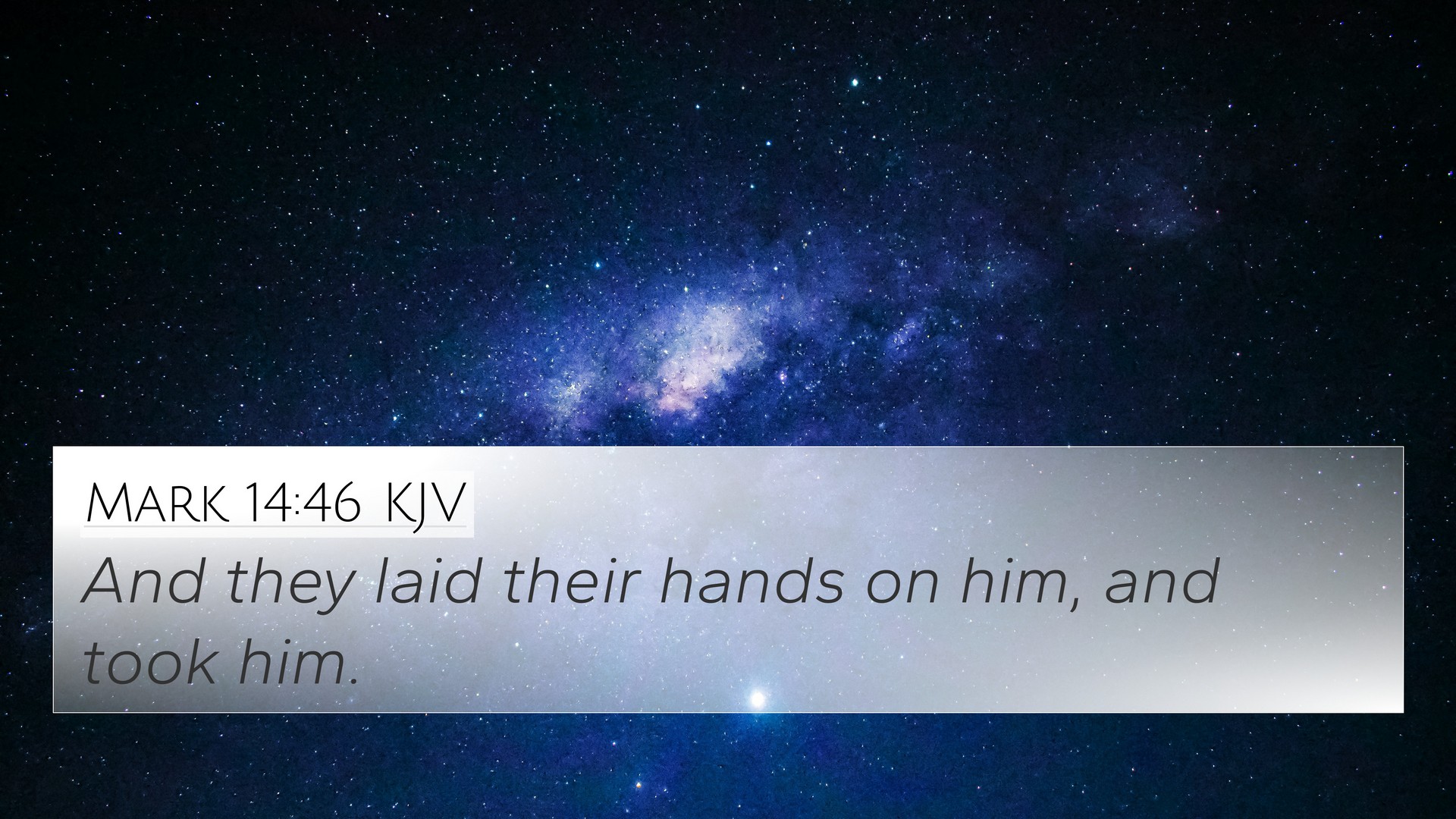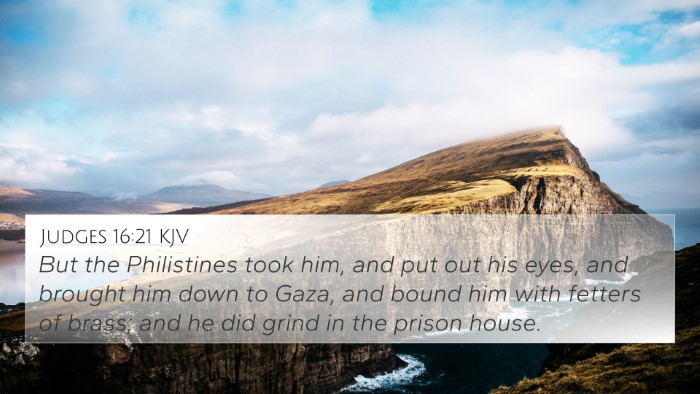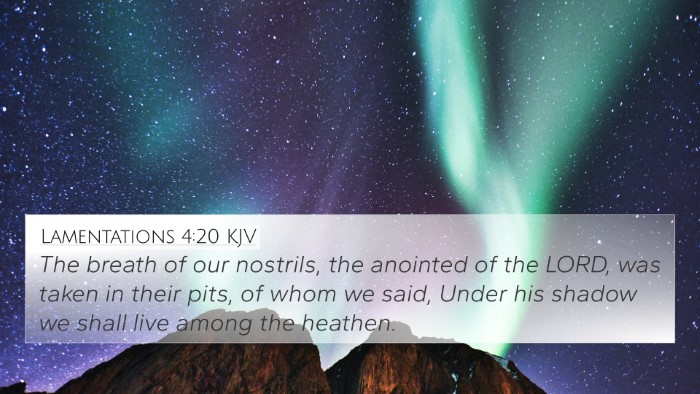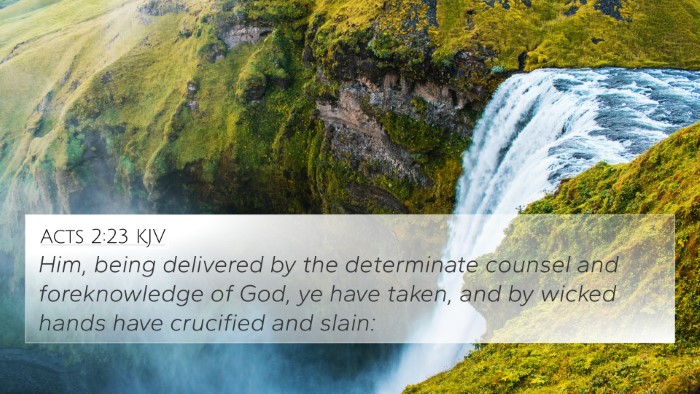Understanding Mark 14:46
Mark 14:46 states: “And they laid their hands on him, and took him.” This verse occurs during a pivotal moment in the Gospel narrative, precisely at the point when Jesus is arrested in the Garden of Gethsemane. The significance of this event is profound, encapsulating themes of betrayal, courage, and divine purpose.
Context and Analysis
This verse is situated within the broader context of Jesus' suffering and Passion. The preceding verses describe the anguish of Jesus as he prays, reflecting his human vulnerability, while the subsequent actions of the crowd reveal the culmination of opposition against him.
Commentary Insights
-
Insights from Matthew Henry
Henry emphasizes the prophetic nature of this arrest, noting how it was a fulfillment of Old Testament prophecies regarding the Messiah's suffering. He reflects on the lack of resistance by Jesus, which exemplifies his submission to the will of God. Henry draws attention to the fulfillment of the Scriptures as a central theme.
-
Insights from Albert Barnes
Barnes focuses on the actions of those who came to seize Jesus, pointing out that they were acting under the influence of the religious authorities, motivated by jealousy and fear. He highlights the contrast between the power of these men and the divine mission of Jesus, illustrating a poignant moment where worldly authority clashes with divine purpose.
-
Insights from Adam Clarke
Clarke elaborates on the method of Jesus' arrest, noting the symbolism of being taken captive. He comments on the idea that this was not merely a physical arrest but represented the spiritual captivity of humanity. Clarke encourages deeper reflection on the implications of this moment for believers, who find freedom through the very sacrifice that begins here.
Thematic Connections
Mark 14:46 offers various thematic connections with other scripture passages:
- Isaiah 53:7: "He was oppressed, and he was afflicted, yet he opened not his mouth; he is brought as a lamb to the slaughter." This verse parallels Jesus' silent submission.
- John 18:10: “Then Simon Peter, having a sword, drew it and struck the high priest's servant, and cut off his right ear.” This verse illustrates the chaos surrounding the arrest.
- Luke 22:47-48: “And while he yet spake, behold a multitude, and he that was called Judas, one of the twelve, went before them, and drew near unto Jesus to kiss him.” This emphasizes the treachery of Judas.
- Matthew 26:56: “But all this was done, that the scriptures of the prophets might be fulfilled. Then all the disciples forsook him, and fled.” A commentary on the fulfillment of prophecy and abandonment of Jesus.
- Acts 3:14-15: This passage references the innocence of Jesus, further illuminating the injustice of the arrest.
- Matthew 5:11-12: “Blessed are you when others revile you and persecute you.” This provides insight into the spiritual outcome of persecution.
- Hebrews 12:2: “Looking unto Jesus the author and finisher of our faith; who for the joy that was set before him endured the cross.” This speaks to the purpose behind his suffering.
Cross-Referencing Mark 14:46
For those studying Mark 14:46, understanding its connections with other scriptures can provide deeper insights. Here are some valuable tools and methods for Bible cross-referencing:
- Bible Concordance: A tool that can help locate where similar themes or words are used across different books.
- Bible Cross-Reference Guide: Utilizes annotations that help to find connected passages.
- Bible Chain References: These allow for easy navigation through related verses in a sequence.
- Comprehensive Bible Cross-Reference Materials: Collections that present related verses in a systematic way.
- Cross-reference Bible study methods: Strategies to compare and contrast verses thematically and contextually.
Conclusion
Mark 14:46 serves as a rich text for understanding the complexities of Jesus' arrest. By exploring its connections to both the Old and New Testaments, believers can gain a deeper appreciation for the narrative of redemption that unfolds throughout the scriptures.
Utilizing tools for Bible cross-referencing, studying themes and contextual connections enhances the understanding of such a significant moment in Christian history. The journey through these verses reflects on not only the events of Jesus' life and mission but also invites reflection on our personal journey of faith.






